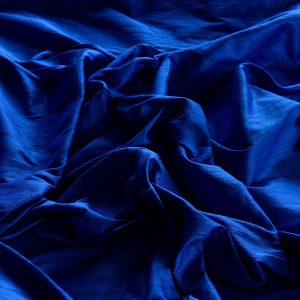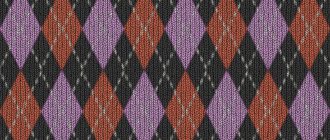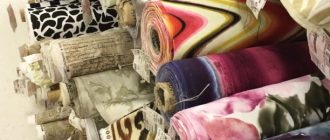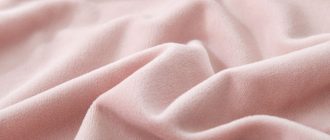Best Things About Silk Fabric
Silk fabric dates back to ancient China. It was first used to wrap the child’s tomb, and later, the Emperor reserved this fabric for himself. China dominated the silk industry for many years and used it as currency, defining price by length.
In the past, silk traveled the Silk Road to connect industries in the East with those in the West. It was an expensive and highly coveted material. Today, silk can be found in everything from fashion to home decor.
What is silk fabric?
You might wonder, What is silk fabric? Silk is a natural fiber obtained by silkworms when they knit their cocoons. Once collected, the fibers are processed. The beauty of this material is undeniable, and it is coveted for its strength, durability, and comfort. Silk is one of the most luxurious fabrics, and it has long remained a favorite of fashion designers, who value its elegance and durability.
Among other materials, silk can be expensive and is used for couture. The fibers are biodegradable and have a higher tensile strength than glass fiber. Silk is also strong and resilient, but it can be damaged by exposure to chemicals and bright light. Because silk is costly, its use of it in fashion is not practical for everyday clothing. A few uses for silk include parachutes, as well as medical applications.
As far as practicality is concerned, silk can be an excellent summer fabric. Not only is it cool and comfortable to wear on bare skin, but it can also conform to your body temperature, providing you with a comfortable and cool feeling throughout the day. If you’re wondering whether silk is really silk, take a heat or vision test. While it’s true that silk is expensive, it’s worth the price tag to own a genuinely luxurious silk shirt.
What is silk made of?

Silk is a beautiful fabric that can be found in many forms. Natural silk is created from the silkworm’s cocoon and is one of the world’s most expensive fabrics. Silk production began in China around 5 thousand years ago, and the country currently dominates the silk market. China is also the world’s largest silk producer, supplying around 50% of the world’s total production. There are also several fascinating legends about silk’s origins.
While it can be strained, silk still has its limits and elasticity. The quality of silk will determine the chances of it tearing. Since silk is very breathable, it provides warmth in cold weather. Pure silk allows the skin to breathe, reducing the risk of sweat or heat rashes. And because silk is a natural fiber, it resists wrinkles and shrinkage. That’s why silk is so prevalent in fashion and beauty.
Although natural silk is expensive, artificial silk is available in factories. While artificial fabrics mimic the look and feel of the real thing, they do not possess the same strength, hygiene, and luster. Artificial fabrics are not as durable as natural silk, and silk exposure to high temperatures and ultraviolet rays reduces their strength. Silk also weakens after being exposed to sunlight for extended periods, reducing its durability and elasticity. However, unlike natural fabrics, artificial fabrics do not wrinkle or burn.
The benefits of using silk fabric
If you’re looking for an eco-friendly, durable fabric, you can’t go wrong with silk. It is an excellent choice for the environment, but it is also good for the skin. Silk fabric also has many aesthetic benefits. No other fabric compares to its lustrous appearance and luxurious feel. Plus, silk is entirely hypoallergenic, so you won’t have to worry about dust mites living in your bedroom.
Using silk is expensive. While the material is delicate and expensive, it requires special care to ensure its long-term quality. Dry cleaning is best, but the fabric can shrink. Some manufacturers even pre-wash the fabric before it is created, but this can be expensive. Silk fabric also requires special maintenance, and long-term exposure to sunlight can weaken its fibers and cause it to stretch and tear, leading to fading and material ripping.
Moreover, silk is naturally hypoallergenic. It can help a person with allergic reactions as it contains sericin, a natural anti-bacterial agent. In addition, silk is also highly resistant to mold and bacteria, making it ideal for allergy sufferers and those with sensitive skin. Silk is also incredibly lightweight and durable, so it can be worn comfortably without worrying about allergic reactions. In addition, it is also elementary to clean and has no chemical additives, which makes it an excellent choice for many people.
The cons of using silk fabric
Silk is a luxury fabric valued for its beauty and delicacy. However, silk requires special care. If washed in hot water, it will fade and look yellow. Even if cleaned with gentle detergents, silk is not colorfast and will fade with exposure to sunlight. The same holds for exposing silk to sunlight, which can weaken its fibers and cause the material to tear. Silk is also prone to perspiration stains, so traveling with it is not practical.
Silk is not as absorbent as other types of fabrics. Because it can absorb the dye, it is better suited for light-colored clothing. Unlike cotton, silk is not affected by heavy furniture or objects. Therefore, silk makes an excellent material for window treatments. However, there are also a few cons when using silk in home furnishings. Here are some of the pros and cons of silk. This material is a luxury, but it is expensive, so consider the pros and cons.
Silk can shrink up to 8%. Unless it’s pretreated, it can be challenging to work with. It can even stain. Also, it’s not very breathable. Seams and Scissors recommends avoiding it when sewing. If you are new to silk fabric, Seams and Scissors recommends avoiding it until you get more experienced.
History of silk fabric
There are many myths about the origin of silk fabric, including one that suggests it was made from flowers and leaves. Legends also claim that silk first appeared in Ancient China and that its matte shine was first seen by Vietnamese sages. In addition, many prominent European grandees admired the silk’s beauty but could not quite explain how it had been created. Vergil and Dionysus each suggested that it was made from flowers or leaves in response to the question.
The Chinese culture had strict rituals and a philosophy called ‘Li’ (or ‘orderliness’) that influenced everything in society. This hierarchy was evident in fabrics, clothing, and decoration. Colors and motifs were given symbolic meanings, and silk was the preferred fabric of the upper classes. During the ancient Chinese culture, silk was not just used for clothing; it was also used for throne seats, hangings, and upholstery.
Chinese history shows that silk production began as early as the 27th century BC. By the end of the first millennium BC, silk was the sole means of exchange, and the silk trade spread from China to the Mediterranean Sea. Silk cultivation spread to other parts of the world, reaching Japan and the Indian subcontinent in around 300 CE. Byzantines and Indians also learned how to grow silkworms and spread silk production to other areas.
How to care for and clean silk fabric?
Cleaning silk garments requires proper handling and gentle care. To begin with, you need to fill a sink with lukewarm water. Add a small amount of mild liquid detergent. Follow the washing instructions on the care tag to avoid damage to the delicate fibers. Use a gentle cycle and make sure to dry the garment flat. After drying, use a hair dryer to remove excess moisture. Lastly, remember to iron your silk garments carefully.
The proper care of silk garments depends on the type and strands of the fabric. Since silk naturally breaks down dust and mites, there’s no need to wash it as often as other materials. However, you can keep it fresh by weathering it in eco-friendly linen water or using a steamer to kill bacteria. Whether a silk dress or a simple blouse, the proper cleaning and maintenance can ensure its beauty and longevity.
The simplest method for spot cleaning silk is to wet it with water. Then, with a cotton bud, gently press the affected area. The color residue will be visible. To clean the remaining color, take the garment to the dry cleaner. Alternatively, you can wash it by hand. You should also avoid exposing your silk garment to excessive light or heat. Keeping your silk garments clean will prevent them from losing their sheen.
FAQ
Main silk fabric colors
- yellow
- purple
- black
- grey
- green
- blue
- pink
- red
- white
Main silk fabric brands
- Ambesonne
- eLuxurySupply
- Michael Miller
- Robert Kaufman
- Cotton + Steel
- Spoonflower
- Sophia-Art
- TELIO
- Lunarable
- APC Fabrics
- Fabric Merchants
- SanVera17
- ben textiles inc.





